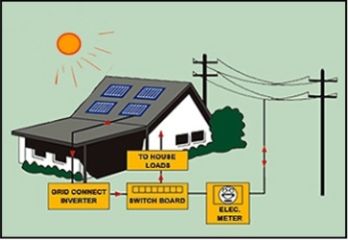
This program offers a generous incentive for batteries as part of its overall solar program. There are of course some specific requirements to quality for this program.Īnother example is the Solar Massachusetts Renewable Target (SMART) Program. Some other types of battery-specific subsidies include California Public Utility Commission’s Self-Generation Incentive Program (SGIP) that offers a direct subsidy from the State for batteries.

While Hawaii has the highest penetration of solar energy, it now has zero export, in which solar energy systems with storage are not at all allowed to export energy to the grid at any time. This is when the price of electricity varies based on the time of day and week it is used or produced. There are some larger and more advanced solar markets that offer time of use.

This is when the cost of the electric energy consumed from the grid is offset by the electric energy generated by the renewable source. market offers a solar subsidy called net metering. However, this is only applicable to batteries if, and only if, the battery is charged exclusively from solar.Īdditional incentives for solar energy varies widely based on the state. There is an investment tax credit (ITC) of 26% for solar and storage installations throughout the U.S. The size and amount of batteries are determined based on household energy patterns. It is these types of markets that batteries are the most useful, since batteries allow consumers to produce solar energy during the day, and then store that energy for use in the evening and mornings. In a market that focuses on feeding as much energy into the grid as possible at a high price point, then the solar energy system size can be maximized.īut there are markets that don’t allow any solar energy feed-in to the grid. For instance, there are some subsidies that limit how much solar energy can be fed into the grid, so this will impact system size. And the type of subsidies can also impact system size and the type of system. The roof size will determine how much power can be put on the roof and how much energy can be produced. The energy patterns are important for understanding how large of a solar energy system is needed to offset or minimize energy bills. The main factors in designing a solar-plus-storage energy system are energy needs, roof size, and subsidies. What are the factors that determine how large the system should be? What are the subsidies offered in the United States? Then when the demand peak is reached, these inverters discharge the energy from the batteries into the grid in order to supply enough energy. So how does this work in reality? When a network operator sees that there will be an energy demand peak at a certain time and day, the virtual power plants (VPP) can be used to send a signal to all the inverters to start storing energy in the distributed network of batteries. A virtual power plant can manage, in real time, all of these distributed sites in a neighborhood as one large, virtual power station. The energy grid is beginning to transition from one based on centralized, polluting power stations to an interconnected, distributed network of solar energy and battery systems. Is there a simple explanation for a virtual power plant? They are becoming both the brain for smart energy management in the home and the point of contact to manage a smart grid. They still manage solar energy, but they can now also manage energy storage in a battery, how energy is consumed in the home, EV charging, and can also support grid stabilization. However, inverters are becoming much more than that they are turning into smart energy managers. Fortunately, the solar energy storage market is benefitting from this, making it more cost-effective for consumers and businesses to generate and store their own solar energy.Ĭan you give me a simple explanation for how inverters works?Īt their most basic level, solar inverters are responsible for converting solar energy into energy that can be used in the home and the grid. For instance, the burgeoning EV market is one of the sectors driving the growth of batteries. This decline is due to a variety of reasons, such as improved technology, advancements in manufacturing, and economies of scale.

The same report by Bloomberg NEF forecasts another 50% drop in Lithium-Ion battery prices by 2023. This is in all sectors, not just in photo voltaic (PV) or residential PV panels. Over the past decade, Lithium-Ion batteries prices have globally declined nearly 90% in manufacturing prices according to Bloomberg NEF. Have they come down in price? Is that due to new technology? The interior mechanisms for a battery backup system.


 0 kommentar(er)
0 kommentar(er)
